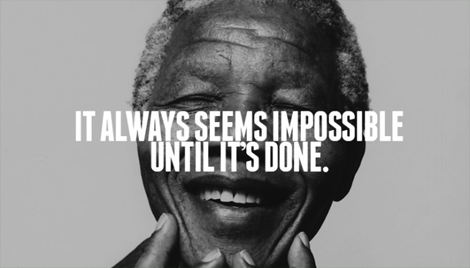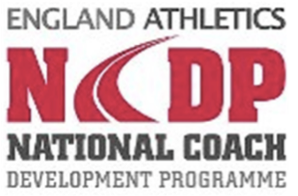As coaches we all share the same interest in our sport – athletics, endurance running in particular. We all want to help our athletes to do well and perform better. In order to improve the athlete’s performance, many decisions need to be made. For example, designing the training programme, agreeing a race schedule, setting the objectives of a training session, assessing the athlete’s fitness, understanding the athlete’s injury, etc.
There is no single source, reference book, common agreed blueprint, coaches can apply when it comes to making decisions. Most coaches have learnt from their own mistakes, from their athletes, from other coaches, from other athletes, from publications, by reading books, etc. In most cases coaches have been following an eclectic approach and holding onto principles which work well. No two coaches are alike. I attend coaching conferences and have exchanges with other endurance coaches. Some coaches share a lot of common ground while others differ and have strong opinions on certain aspects of endurance training. Differences in belief system, values and behaviours are common and make it equally interesting when communicating among coaches.
For example, I “believe” having a coaching philosophy outlining fundamental principles how I go about coaching athletes is very important. Often, I spend time with athletes explaining the roles and responsibilities of the athletes and the coach. This is not always an easy message to convey, but often I refer back to the same principles. A coaching philosophy, helps me to get a shared understanding and working in partnership with the athletes, which leads to better performance.
I am aware that other coaches may not like how I think about coaching endurance runners. For example, I should get athletes running as many miles as possible, athletes should only compete for club events, not taking rest days, or encourage them to run through injuries, more speed work or should stop doing warm-ups (just to illustrate the point). While respecting everybody’s opinion, as coaches we make decisions guided by our values and believes. These have been shaped over many years and coaching many athletes, which I try to explain below.
1.) Coach the athlete (not the event)
Often runners approach me with specific goals in mind. Having goals is great. Having goals which follow the smart principles – specific, measured, attainable, realistic and time-bound are even better. However, athletes often want to achieve certain standards, for example to run a sub 3:00 hour marathon, a sub 20 minutes 5k, a sub 40 minutes 10k, breaking the 10 minutes for the 3,000m perhaps or even more challenging 2 minutes for the 800m. While event specific considerations (e.g. 800m/1500m vs. 5k/10k/marathon) are important part of my philosophy is not to coach a specific event, rather to coach the athlete. Not every marathon runner or 800m runner is one and the same. While there are some common training principles across endurance events, there is no standard recipe which can be applied to every athlete. If there would be, at best, without individualisation it would be sub optimal. Every athlete has individual strength and weaknesses, which need to be coached and developed individually and specifically. I coach athletes as individuals, as people and my strength as a coach is to work out what makes them “tick” in order to exploit their full potential.
2.) ‘It always seems impossible, until it’s done’
The famous quote by Nelson Mandela epitomises what endurance coaching is all about. On many occasions, runners of all abilities approach and ask for running coaching. The coachee has to various degrees a specific goal in mind. Alternatively, the coach can assist the coachee defining the goal in a goal setting session. Once goals have been agreed between coachee and coach, then the role of the coach is to turn the coachee’s goals into reality and guide the coachee, step by step, to a new level, not thought possible or experienced before.
Throughout many years of coaching endurance runners, there have been many cases of runners demonstrated great level of self-belief and a long-term vision which allowed them to improve to a new level of ability not thought possible before by taking off big chunks of their previous PBs. Hene, I am a firm believer that everyone, no matter of ability, be it a beginner or a very experienced club runner, can improve through coaching and following a structured training programme.
From a coaching perspective it is very rewarding and great joy to see runners achieving new heights of performance and to fulfil their (full/genetic) athletic potential.
3.) Horizontally and Vertically Integrated Training
Training does not happen in isolation. From a coaching point of view, we cannot draw a lot of insight by looking at an isolated session. For example, the athlete may perform well by doing a set of 400m during the week, though his training and performance over a longer period has not much improved. Falling into the trap by looking at a training session in isolated does only provide a narrow view of the athlete’s level of fitness. For example, the athletes may show great leg speed, but rather weak strength endurance. Further, there are many other factors impacting the runner’s ability to perform – rest, recovery, stress, work/life balance, nutrion, hydration, training load, etc.
When designing personalised and well balanced training programmes, it is important that a training programme is horizontally and vertically integrated. Horizontally, in such a way that week on week training is progressing and building of the athlete’s previous training. The training should be periodised, working towards a peak, aligned with the athlete’s goals and race schedule in mind. Vertically integrated in such a way, that all performance factors (physiological, tactical, psychological and technical) are well balanced and reflecting the runner’s circumstances.
4.) If an idea doesn’t work, try something different
As stated above every athlete is an individual and have to be treated accordingly. The same applies for coaching methods. What works for one athlete, does not work for another. Holding on to fixed ideas or methods when coaching is not very tailored and focused. When following a structured training programme, the athlete constantly adapts to the training regime. Capturing the learning during the journey is key for the athlete’s improvement. Coach and athlete should always ask and challenge in terms of what works well, what does not work well, what can be done differently. It is through small iterations that training can be optimised and not through a fixed idea applied rigorously.
5.) Simple Language
From time to time I meet coaches at conferences and seminars. I also enjoy observing coaches at the running track as well. Many coaches are doing a great job by explaining complex training concepts in simple terms. In those case the coach has often an in-depth understanding and can abstract and simplify an idea or even use a metaphor/analogy.
It’s not the best idea to use the latin names by referring to the running related muscles when coaching youngsters. There is no need to show off or using a lot of technical terms. From a coaching perspective, when communicating with the coachee it is key to use simple terms, breaking complex ideas down into simple concepts first and check for understanding frequently. There is nothing more frustrating when athlete and coach don’t understand each other!
6.) Selective in who I coach
Every year I receive many enquiries and requests regarding 1:1 running coaching from beginners looking to run their first London Marathon to very experienced club runners wanting to improve their personal best. I would like to help anyone who is enthusiastic and pasionate about running. Unfortunately, my coaching time is limited and I cannot take on every coaching enquiry forward. I want to make sure that the time I have available for coaching runners is of good use. Rest assured, I am not elitist and do not focus on fast runners only, I will always coach runners at all abilities, ages and running events. It’s important to have a good representation of coachees and be faced with a variety of coaching challenges. When taking on new runners it is important to me there is a fit between the runner’s mentality, the coach and the training program. A trusted coachee / coach relationship relies on effective communication and the ability to provide feedback as well as the ability to follow through on a training plan. It’s important that those skills and the willingness to learn, to improve and wanting to be coached are in place.



